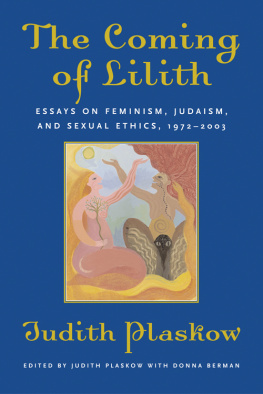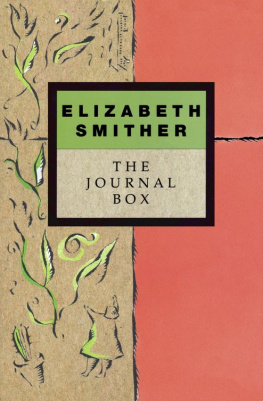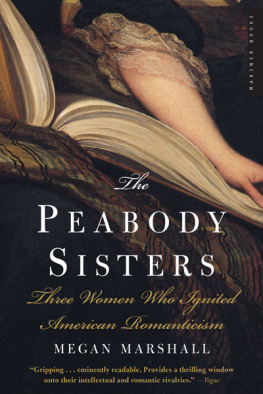
THE ESSENTIAL MARGARET FULLER

DOVER THRIFT EDITIONS
GENERAL EDITOR: SUSAN L. RATTINER
EDITOR OF THIS VOLUME: MICHAEL CROLAND
Copyright
Copyright 2019 by Dover Publications, Inc.
All rights reserved.
Bibliographical Note
This Dover edition, first published in 2019, is a new selection of works reprinted from standard texts. A new introductory Note has been specially prepared for this volume. Minor inconsistencies and other style vagaries derive from the original sources and have been retained for the sake of authenticity.
Library of Congress Cataloging-in-Publication Data
Names: Fuller, Margaret, 18101850, author.
Title: The essential Margaret Fuller / Margaret Fuller.
Description: Mineola, New York : Dover Publications, Inc., 2019. | Series: Dover thrift editions | This Dover edition, first published in 2019, is a new selection of works reprinted from standard texts. A new introductory Note has been specially prepared for this volume.
Identifiers: LCCN 2018054581 | ISBN 9780486834092 | ISBN 0486834093
Subjects: LCSH: American literatureWomen authors19th century.
Classification: LCC PS2502 2019 | DDC 818/.309dc23
LC record available at https://lccn.loc.gov/2018054581
Manufactured in the United States by LSC Communications
83409301 2019
www.doverpublications.com
Note
MARGARET FULLER was born on May 23, 1810, in Cambridgeport (now Cambridge), Massachusetts. Timothy Fullerher father, a lawyer, and, later, a congressmanwas disappointed that his firstborn child was a girl. She was a precocious child, and he gave her a rigorous home education. He taught her to read at age 3 and Latin by age 6, and she learned Greek, Italian, and French as well. To excel in all things should be your constant aim; mediocrity is obscurity, he advised when she was 10. She blamed his grueling education for the depression and headaches that plagued her throughout her life. Formal education was limited for girls at that time, and she did not attend school until she was 14.
After her father died in 1835, Fuller, her mother, one sister, and five brothers were transferred to the custody of her uncle. At 25, she resisted the idea of going from one mans care to anothers. Instead, she supported her immediate family through teaching and writing. She often worked to the point of exhaustion.
Fuller developed her ideology through her literary endeavors and events. In 1839, she published a translation of Eckermanns Conversations with Goethe. From 1839 to 1844, in Boston, she led conversations that empowered women. Attendees discussed womens roles in society, in addition to literature, education, mythology, and philosophy. From 1840 to 1842, she was the editor of The Dial, a Transcendentalist quarterly magazine, for which she wrote poetry, reviews, and critiques.
In 1845, Fuller published her landmark book, Woman in the Nineteenth Century. The groundbreaking feminist work advocated for political equality between the sexes and promoted emotional, intellectual, and spiritual fulfillment for women. She encouraged young women to seek independence from the home and family, with education as the vehicle to do so. She argued against strictly domestic roles for women, saying that they should fulfill their potential in whatever ways appealed to them. Let them be sea-captains, if they will, she wrote. The first edition of the book sold out in two weeks. Knickerbocker Magazine called it a well-reasoned and well-written treatise. Woman in the Nineteenth Century was widely influential, inspiring numerous readers as well as the Seneca Falls Womens Convention, the first womens rights convention in the U.S., in 1848.
The present volume is divided into three parts. The first section features Fullers autobiographical writing, including poetry, journal entries, and letters, from 1833 to 1842. The second section is Summer on the Lakes, which she published in 1844 about frontier life in Illinois and Wisconsin. The third section collects Fullers reviews and essays from the New-York Daily Tribune from 1844 to 1846. During this period, she was a literary and cultural critic for the newspaper, making her one of the first professional women in the American press. Collectively, these works give a comprehensive look into Fullers thinking beyond her magnum opus.
Fuller went to Europe in 1846 and became the first American woman to be a foreign correspondent, reporting for the Tribune. She traveled to England, France, and Italy, exchanging ideas with writers and radicals. In 1847, she met the Marchese Giovanni Ossoli, a lieutenant in the Italian Unification Movement. They had a child, Angelo, and apparently got married secretly. They were involved in the Roman revolution in 1848, and Fuller wrote a history of the revolution. In 1850, while attempting to return to the United States, she died in a shipwreck near Fire Island, New York. Fuller, her husband, and her manuscript were never found; only the body of her infant son was recovered.
Contents
AUTOBIOGRAPHICAL WRITINGS
TO A. H. B.
On our meeting, on my return from N. Y.
to Boston, August 1835.Written Jany 1836
Brief was the meeting,tear-stained, full of fears
For future days, and sad thoughts of the past,
Thou, seeing thy horizon overcast,
Timid, didst shrink from the dark-coming years;
And I, (though less ill in mine appears,)
Was haunted by a secret dread of soul,
That Fate had something written in her scroll
Which soon must ope again the fount of tears;
Oh could we on the waves have lingered then,
Or in that bark, together borne away,
Have sought some isle far from the haunts of men,
Ills left behind which cloud the social day,
What grief I had escaped; yet left untried
That holy faith by which, now fortified,
I feel a peace to happiness allied;
And thou, although for thee my loving heart
Would gladly some Elysium set apart,
From treacherys pestilence, and passions strife,
Where thou mightst lead a pure untroubled life,
Sustained and fostered by hearts like thy own,
The conflicts which thy friend must brave, unknown,
Yet I feel deeply, that it may be best
For thee as me, that fire the gold should test,
And that in Gods good time we shall know perfect rest!

TO THE SAME. A FEVERISH VISION.
After a day of wearying, wasting pain,
At last my aching eyes I think to close;
Hoping to win some moments of repose,
Though I must wake to suffering again.
But what delirious horrors haunt my brain!
In a deep ghastly pit, bound down I lie,
About me flows a stream of crimson dye,
Amid its burning waves I strive in vain;
Upward I stretch my arms,aloud I cry
In frantic anguish,raise me, or I die!
When with soft eyes, beaming the tenderest love,
I see thy dear face, Anna! far above,
By magnet drawn up to thee I seem,
And for some moments was dispelled the fevers frightful
dream!
Sept. 1835

Journal, 1835
On the evening of the 30th of September, 1835, ever memorable eramy father was seized with cholera and on the 2d of October was a corpse. For the first two days, my grief under this calamity was such as I dare not speak of. But since my fathers head is laid in the dust, I feel an awful calm, and am becoming familiar with the thought of being an orphan. I have prayed to God that
Next page










